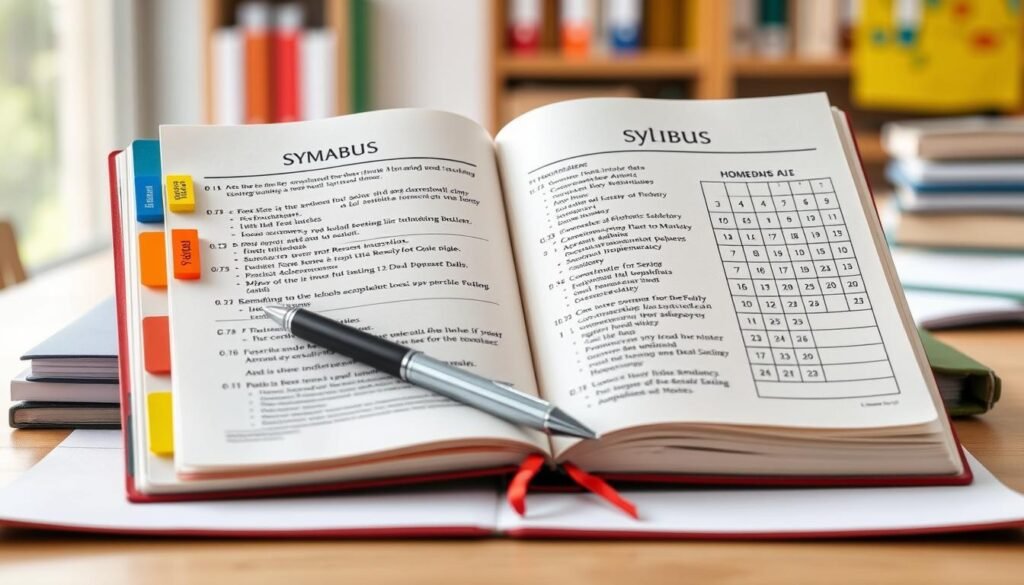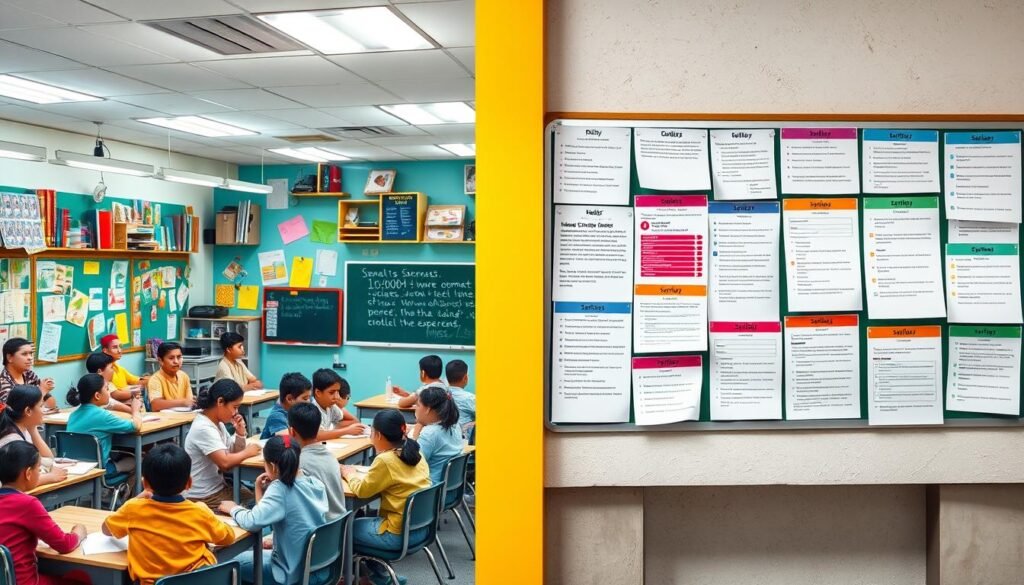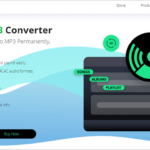In education, “curriculum” and “syllabus” are often mixed up, but they mean different things. Knowing the difference is key for students and teachers. It shapes how a subject is taught, learned, and checked.
Key Takeaways : Curriculum
- A curriculum is a detailed plan that outlines what students will learn, how they will learn it, and how it will be taught. It covers the learning goals, content, and teaching methods for a subject or course.
- A syllabus is a detailed plan for a specific course. It lists the topics, assignments, and assessments that will be covered during a certain period.
- Curriculums are made at the department or school level. Syllabi are made by individual teachers or teams for a course.
- Curriculums are flexible and can change. Syllabi are strict and focus on a specific course.
- It’s important to match syllabi with the curriculum. This makes sure students get a full and connected learning experience.
Understanding the Terminology
Curriculum Definition
A curriculum outlines what students will learn, what goals they aim for, and how they will learn it. It helps teachers plan lessons and activities. It includes the knowledge, skills, and attitudes students should gain.
Curricula can be broad or specific. They can be set by a government or by a school. A good curriculum makes sure students learn a variety of subjects. It also includes activities for informal education, physical education, and technical education.
The curriculum is key to teaching and learning. It shows what a school or state wants students to achieve. By following common core state standards and California Department of Education guidelines, teachers make sure students are ready for the future. This is true for both in-class and online learning.
Curriculum theory and models help design effective school curricula. They support the overall learning goals and values of a school.
Syllabus: A Course-Specific Roadmap
The syllabus is key to a course or subject. It acts as a guide for both teachers and students. It clearly lays out what will be covered, what’s expected, and how learning will happen.
This roadmap is made for a specific course. It lists the course details, goals, books needed, how grades work, and a schedule of topics and tasks.
Syllabi should match the students’ needs and how they learn best. They make sure students know what’s expected, stay on track, and engage with the material. Teachers use them to plan how they teach and check student progress. This ensures the course meets state education standards.
The syllabus gives students a clear path to success in the course. It’s also a big help for teachers. They can plan better and make sure the course meets all the educational standards.
| Key Elements of a Syllabus | Purpose |
|---|---|
| Course description | Provides an overview of the subject matter and the learning experience |
| Learning objectives | Outlines the specific skills and knowledge students will acquire by the end of the course |
| Textbooks and required materials | Informs students about the necessary resources for the course |
| Grading policies | Establishes clear expectations for student performance and evaluation |
| Course schedule | Provides a detailed timeline of topics, assignments, and assessments |
The syllabus is a key tool for both teachers and students. It helps make learning structured and engaging. It also makes sure it fits with the overall curriculum and educational goals.
Key Differences Between Curriculum and Syllabus
In education, “curriculum” and “syllabus” are often mixed up, but they mean different things. It’s key to know how they differ for teachers, students, and those making curriculums.
Scope and Level of Detail
The curriculum covers the whole learning plan, including goals, subjects, and how they’re taught. The syllabus, however, focuses on specific topics and activities in a class or course.
Flexibility and Adaptability
Curriculums are strict, setting rules and standards. They’re made by education departments or national bodies. Syllabi, though, let teachers adjust the content and how it’s taught to suit their students. This flexibility is crucial for reaching students of all kinds.
| Criteria | Curriculum | Syllabus |
|---|---|---|
| Scope | Broad, covers the entire educational program | Narrow, focuses on a specific subject or course |
| Level of Detail | Comprehensive, outlines learning objectives and subject areas | Specific, details the topics, concepts, and activities |
| Flexibility | Prescriptive, must be followed as per guidelines | Adaptable, can be tailored by individual teachers |
| Development | Designed by education departments or authorities | Created by subject matter experts and teachers |
Knowing these differences helps teachers make sure their lesson plans fit the broader curriculum. This gives students a well-rounded and meaningful learning experience.
Aligning Syllabi with the Overall Curriculum
Making a good curriculum means linking each course’s syllabus with the program’s main goals. This makes sure students see how each subject fits into their education. It helps them understand the purpose of what they’re learning.
When syllabi and curricula match up, students see how their knowledge and skills connect. This makes their learning better and helps teachers too. It makes the whole process of teaching and learning work better.
But, keeping syllabi and curricula in sync can be hard. They need to change with new discoveries and the needs of today’s students. Teachers must always check and update their courses to stay relevant.
The aim is to make learning smooth and connected. Each course should build on what came before. This way, students get a full education that prepares them for their future in their chosen field.
By linking syllabi with the overall curriculum, teachers help students move through school better. It deepens their understanding and connects them to their learning goals.
Also Read : Best University to Study in Another Country
Conclusion
The curriculum and syllabus are key parts of education. The curriculum sets the overall plan and content of a course. The syllabus gives a detailed plan for a specific course.
Knowing the differences between them is important for students, teachers, and school leaders. This knowledge helps set clear goals for courses and programs. It makes sure students get the right knowledge and skills for their future.
Teachers keep improving their teaching methods. Understanding the difference between curriculum and syllabus is crucial in this process. It helps create a better learning environment. This way, students can achieve their best.
FAQs
Q: What is the definition of curriculum?
A: The definition of curriculum refers to the comprehensive set of courses, content, and learning experiences that an educational institution provides to its learners. It encompasses the goals, objectives, and materials used throughout the instructional process.
Q: How does a syllabus differ from a curriculum?
A: A syllabus is a specific outline of a course of study, detailing the topics, assignments, and assessments for a particular class. In contrast, the curriculum encompasses a broader educational framework, including various syllabi across multiple courses and subjects.
Q: What is curriculum theory?
A: Curriculum theory is the study of the principles and practices of curriculum development and design. It explores the ideological and philosophical foundations of curriculum, helping educators understand how to create effective instructional materials and frameworks for student’s learning.
Q: What role does informal education play in the curriculum?
A: Informal education refers to learning that occurs outside of a structured classroom setting. It can complement formal curriculum by providing real-world contexts and experiences that enhance the learner’s understanding and application of knowledge.
Q: What is meant by hidden curriculum?
A: Hidden curriculum refers to the unwritten, unofficial lessons, values, and perspectives that students learn in school. This can include social norms, attitudes, and behaviors that are not explicitly part of the formal curriculum but significantly influence a learner’s experience.
Q: How does secondary education differ in curriculum development compared to primary education?
A: In secondary education, curriculum development often emphasizes subject specialization and prepares students for higher education or vocational training. It usually incorporates more complex content and critical thinking skills compared to the foundational skills taught in primary education.
Q: What is a model curriculum?
A: A model curriculum serves as a standard or reference framework for designing educational programs. It typically includes guidelines for content, learning objectives, instructional strategies, and assessment methods that can be adapted by various educational institutions.
Q: What is the best curriculum for K-12 education?
A: The best curriculum for K-12 education is one that meets diverse learner needs, aligns with state standards, and incorporates various instructional methods. It should also be flexible to adapt to different educational contexts and promote student engagement and critical thinking.
Q: What is the significance of curriculum frameworks?
A: Curriculum frameworks provide a structured approach to curriculum design and implementation. They outline the essential knowledge and skills expected at each educational level, ensuring consistency and quality across different educational settings.
Q: How can professional development impact curriculum implementation?
A: Professional development equips educators with the necessary skills and knowledge to effectively implement curriculum. It can enhance their understanding of instructional strategies, assessment techniques, and curriculum design, ultimately improving student’s learning outcomes.
Source Links
- https://leverageedu.com/blog/syllabus-vs-curriculum/
- https://www.linkedin.com/pulse/what-difference-between-syllabus-curriculum-haytham-elboushi
- https://unischolars.com/blog/syllabus-vs-curriculum/







